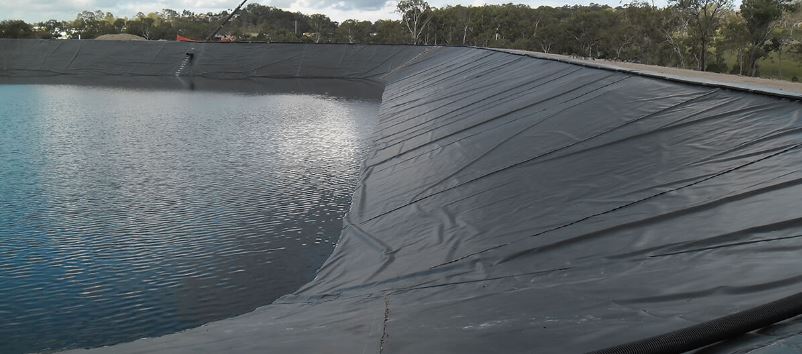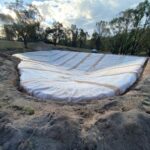Geosynthetic clay liner (GCL) and Geomembranes are two popular materials used in the containment of hazardous waste and liquids. Both materials have their own unique features, benefits and drawbacks that make them suitable for different applications.
Geosynthetic clay liners are a composite material consisting of a layer of sodium bentonite clay sandwiched between two layers of geotextile fabric. The bentonite clay swells when it comes into contact with liquid, forming a barrier with low permeability. Geosynthetic clay liners are ideal for applications where high strength and puncture resistance is required, such as landfills, lagoons and ponds. The geotextile layers provide added strength and stability to the material, which is important in areas where heavy loads are expected.
Geomembranes, on the other hand, are made of synthetic materials such as high-density polyethylene (HDPE) or linear low-density polyethylene (LLDPE). They are flexible, impermeable sheets that are used to prevent the migration of liquids and gases. Geomembranes are typically used in applications such as pond liners, canal liners, and landfill caps. They are ideal for applications where a smooth, exposed hydraulic barrier is required.
In terms of cost, Geosynthetic clay liners are generally more expensive than geomembranes. This is due to the cost of the bentonite clay, the geotextile layers and the added complexity of production. They are also a popular choice for applications where a liner is expected to be in service for an extended period of time and offer several advantages over other types of liners, such as geomembranes.
One of the primary advantages of geosynthetic clay liners is that they are often more robust and can withstand a greater amount of wear and tear. This is because they are made from a combination of high-grade clay (bentonite) and geosynthetic materials, which gives them greater strength and durability.
In addition to their strength, geosynthetic clay liners are also easier and cheaper to install than some other types of liners. Unlike geomembranes, which require welding to join sections together, geosynthetic clay liners can be simply overlapped together. This makes them a more cost-effective option for applications where a large area needs to be lined.
In conclusion, both Geosynthetic clay liners and geomembranes have their own unique features and benefits that make them suitable for different applications. When choosing between the two materials, it is important to consider the specific requirements of your project, including strength and puncture resistance, cost, and installation process. By carefully considering these factors, you can select the best liner material for your specific application and ensure that your project is a success.
To find the right liner material for your project, call our expert team on 1300 287 484 or email sales@polyfabrics.com.au.


